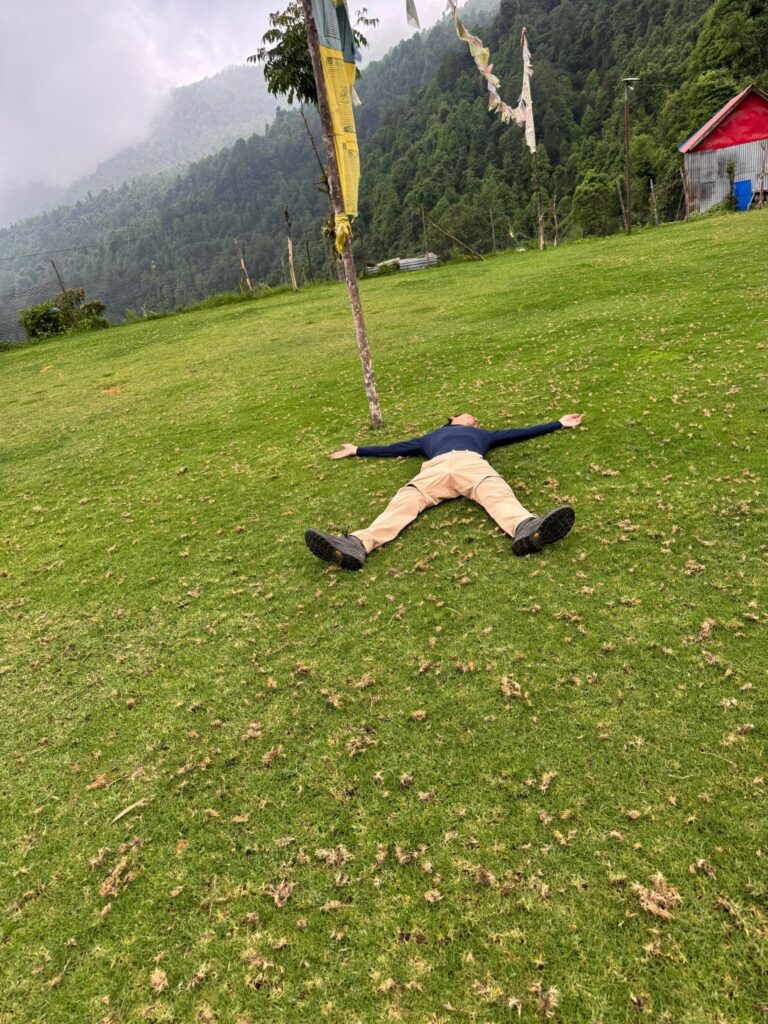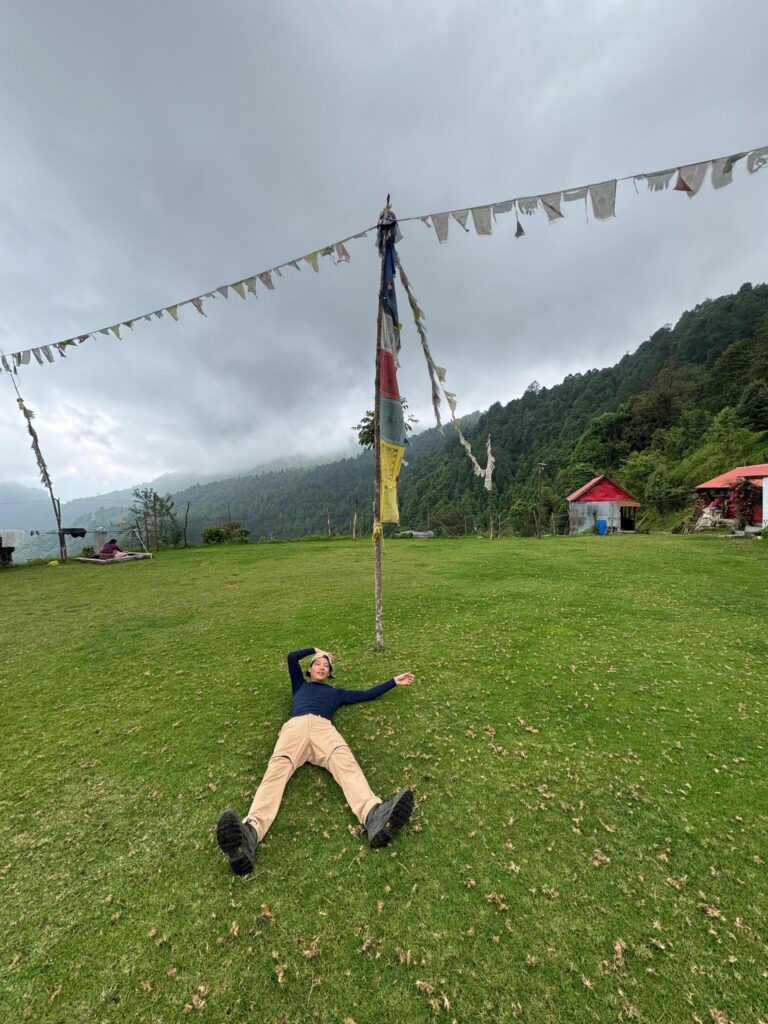Table of Contents
The Mardi Himal Trek in Nepal’s Annapurna region is a stunning adventure, but altitude sickness on Mardi Himal Trek is a significant concern due to its rapid ascent to 4,500 meters at Mardi Himal Base Camp. This guide covers the symptoms of altitude sickness on Mardi Himal Trek, effective prevention strategies, and essential Nepal trekking tips to ensure a safe journey.
Understanding Altitude Sickness

Altitude sickness, also known as Acute Mountain Sickness (AMS), occurs when your body struggles to adapt to lower oxygen levels above 2,500 meters. The trek’s quick climb from Pokhara (1,000 meters) to high altitudes increases the risk, making awareness and preparation critical for trekking safety.
Symptoms of Altitude Sickness
Early recognition of altitude sickness can prevent serious complications. Common symptoms include:
- Headache: Persistent, throbbing pain, often worse at night.
- Nausea and Vomiting: Feeling queasy or unable to eat.
- Fatigue: Extreme tiredness despite minimal effort.
- Dizziness: Lightheadedness or unsteadiness.
- Shortness of Breath: Difficulty breathing during activity.
- Loss of Appetite: Lack of interest in food.
- Insomnia: Trouble sleeping despite exhaustion.
Severe symptoms, indicating High Altitude Pulmonary Edema (HAPE) or High Altitude Cerebral Edema (HACE), include confusion, severe breathing issues, frothy sputum, or bluish skin. If you experience these during the Mardi Himal Trek, descend immediately and seek medical help.
Preventing Altitude Sickness
To reduce the risk of altitude sickness or Acute Mountain Sickness, follow these proven strategies:
1. Gradual Ascent and Acclimatization
Slow ascents help prevent altitude sickness on Mardi Himal Trek. Spend extra time at Forest Camp (2,550 meters) or Low Camp (2,970 meters) and avoid climbing more than 500-600 meters daily above 3,000 meters.
2. Stay Hydrated
Dehydration exacerbates altitude sickness on Mardi Himal Trek. Drink 3-4 liters of water daily, using purification tablets or filters available along the trail.
3. Proper Nutrition
A high-carb diet fuels high altitude trekking. Teahouses offer meals like dal bhat, and snacks like nuts and chocolate help combat altitude sickness on Mardi Himal Trek.
4. Avoid Alcohol and Smoking
Alcohol and smoking worsen altitude sickness on Mardi Himal Trek by reducing oxygen intake. Stick to water, tea, or electrolyte drinks.
5. Medication
Consult a doctor about Diamox (Acetazolamide) to prevent altitude sickness on Mardi Himal Trek. Carry ibuprofen for headaches, but use medications under medical guidance.
6. Listen to Your Body
Rest if you feel symptoms of altitude sickness on Mardi Himal Trek. Descend if symptoms like severe headaches persist, prioritizing trekking safety.
Essential Tips to Avoid
Proper Mardi Himal Trek preparation minimizes altitude sickness on Mardi Himal Trek:
- Physical Fitness: Train with cardio (hiking, running) 6-8 weeks prior to build stamina for high altitude trekking.
- Gear and Clothing: Pack warm layers, waterproof jackets, trekking boots, and a sleeping bag for cold nights at Mardi Himal Base Camp.
- Permits: Secure the Annapurna Conservation Area Permit (ACAP) and TIMS card.
- Guides and Porters: Hire local support for navigation and safety, especially for beginners.
- Travel Insurance: Ensure coverage for high altitude trekking up to 4,500 meters.
Remedies for Altitude Sickness
If you experience mild altitude sickness on Mardi Himal Trek, try these remedies:
- Rest: Pause ascension until symptoms improve.
- Hydrate: Drink water or rehydration salts.
- Oxygen: Some teahouses at High Camp provide emergency oxygen.
- Descend: Drop 300-500 meters if symptoms worsen.
- Herbal Remedies: Garlic soup or ginger tea from teahouses may ease mild symptoms.
Why the Mardi Himal Trek is Worth It Despite Altitude Sickness Risks

Despite the challenges of altitude sickness on Mardi Himal Trek, the trail’s stunning views of Annapurna, Machhapuchhre, and Mardi Himal, plus serene forests and Nepali culture, make it unforgettable. With proper precautions, you can safely enjoy this Himalayan gem.nd awareness of altitude sickness, you can safely enjoy this less-crowded gem in the Himalayas.
Faq’s
What are the main symptoms of altitude sickness on the Mardi Himal Trek?
Altitude sickness symptoms include headaches, nausea, dizziness, fatigue, and shortness of breath, with severe cases showing confusion or breathing difficulties. Mardi Treks provides trained guides who monitor trekkers for these symptoms and offer immediate guidance to ensure safety.
How can I prevent altitude sickness during the Mardi Himal Trek?
Prevent altitude sickness by ascending gradually, staying hydrated, eating high-carb meals, and avoiding alcohol. Mardi Treks designs itineraries with acclimatization days and ensures access to purified water and nutritious food at teahouses.
Is the Mardi Himal Trek safe for beginners regarding altitude risks?
The Mardi Himal Trek is safe for fit beginners if they follow a proper itinerary and take precautions against altitude sickness. Mardi Treks offers beginner-friendly guidance, including pre-trek fitness tips and support from experienced guides.
What should I do if I get altitude sickness on the trek?
Stop ascending, rest, hydrate, and descend if symptoms like severe headaches or breathing issues persist. Mardi Treks equips guides with oxygen and first-aid kits and coordinates swift evacuations if needed.
What gear is essential to manage altitude sickness risks on the trek?
Pack warm layers, trekking boots, a sleeping bag, and a water bottle to stay comfortable and hydrated at high altitudes. Mardi Treks provides a tailored gear checklist and rental options in Pokhara for proper trek preparation.
Why Choose Mardi Treks for Your Mardi Himal Trek?
Mardi Treks, a premier local travel agency, ensures a safe and memorable Mardi Himal Trek by offering personalized itineraries with acclimatization stops, expert guides trained in altitude sickness management, and comprehensive logistics support, including permits and emergency preparedness. Contact them at their Pokhara office or website (e.g., www.marditreks.com) to plan your adventure with confidence.
